数值模拟华北克拉通岩石圈减薄的一种可能机制——下地壳榴辉岩重力失稳引起的拆沉
乔彦超,郭子祺,石耀霖
1 中国科学院遥感应用研究所,北京 100101
2 中国科学院研究生院,北京 100039
1 引 言
大陆岩石圈一直被认为是相对稳定的构造单元,然而并不是所有的前寒武纪克拉通从它们形成以后都是处于稳定状态.近期的研究发现,如北美的Wyoming克拉通自中元古代以来发生了减薄和破坏[1-2],南非的 Kapvaal克拉通在3.1Ga 时由于岩石圈地幔的拆沉作用而被改造[3],Seber等研究发现地中海Alboran海盆及其周围摩洛哥北部Rif造山带和西班牙南部Betic造山带(两者均属阿尔卑斯造山期产物)岩石圈地幔现今正在发生拆沉作用[4],很多结果也表明[5-18]华北克拉通在古生代再活化而发生减薄,克拉通岩石圈的改造和破坏已经成为大陆动力学研究的一个热点.也正是如此,华北克拉通岩石圈破坏已成为继青藏高原和大别—苏鲁超高压变质带之后,我国又一在国际地球动力学界引起广泛关注的重大科学问题,已成为国际地球科学前沿研究领域.
关于华北克拉通岩石圈减薄机制还是有比较多的争议[6-8,12,17-20],高山等[17-18]通过研究在华北克拉通发现高镁安山岩、英安岩、和埃达克岩,并认为这些岩石是部分熔融的榴辉岩和地幔岩石相互反应生成,是华北克拉通拆沉的主要证据.拆沉作用泛指由于重力的不稳定性导致岩石圈地幔、大陆下地壳或大洋地壳沉入下伏软流圈或地幔的过程.俯冲大洋岩石圈中榴辉岩的拆沉再循环是板块构造的直接产物[21-23].
拆沉理论认为岩石圈加厚是大陆岩石圈和下地壳拆沉的前奏.岩石圈加厚促使基性下地壳转变为榴辉岩[17-18];榴辉岩的密度比岩石圈地幔的密度高200~400kg/m3[24-26].这种差异将造成重力上的不稳定性,使榴辉岩拆沉再循环进入地幔中[27-32].
本文研究通过数值计算的方法,结合华北克拉通已有的地质成果,模拟华北克拉通岩石圈拆沉机制,通过研究讨论能够发生拆沉需要榴辉岩的厚度,不同规模榴辉岩造成拆沉的不同模式,以及对比热侵蚀和拆沉所造成的地表不同反应,来揭示华北克拉通岩石圈不同减薄机制的动力所对应的不同地质构造特征.
2 模 型
2.1 数值计算的基本原理
我们曾对计算原理、使用公式以及所使用程序的验证进行过论述[23],本文不再详述.研究基于粘滞系数、密度与温度相关的二维上地幔小尺度地幔对流[33-40],其关系式为

其中η0是等效粘滞系数,b是经验系数,Ttop和Tbottom分别是计算区域上下边界的温度,ρ0是等效密度,α是膨胀系数.
我们使用了有限差分方法,并结合MIC技术[34-36]求解连续性方程,动量守恒方程和能量守恒方程.计算中使用无限大Prandtl数假定,这样忽略动量方程中的惯性项,假定流体是不可压缩的,并且引入 Boussinesq假设[41,42].
计算的二维模型是长700km,宽700km的方盒子,网格为71×71,共有400×400个示踪点.边界条件:所有的边都为自由边界条件;左右两个边界是绝热边界条件 (∂T/∂x =0);顶边界温度为Ttop=273K;底边界温度为Tbottom=1773K.
克拉通拆沉过程中的第一步是岩石圈加厚玄武岩相变为密度比较大的榴辉岩.计算中我们使用由Wylllie[43]提出,Anderson[44]修改的玄武岩-榴辉岩相变图,如图1.因此大于50km的地壳被认为是榴辉岩质的,小于25km是玄武质,深度在25~50km之间且温度达到Teclo(z)(公式3,图1)的玄武岩转变为榴辉岩.
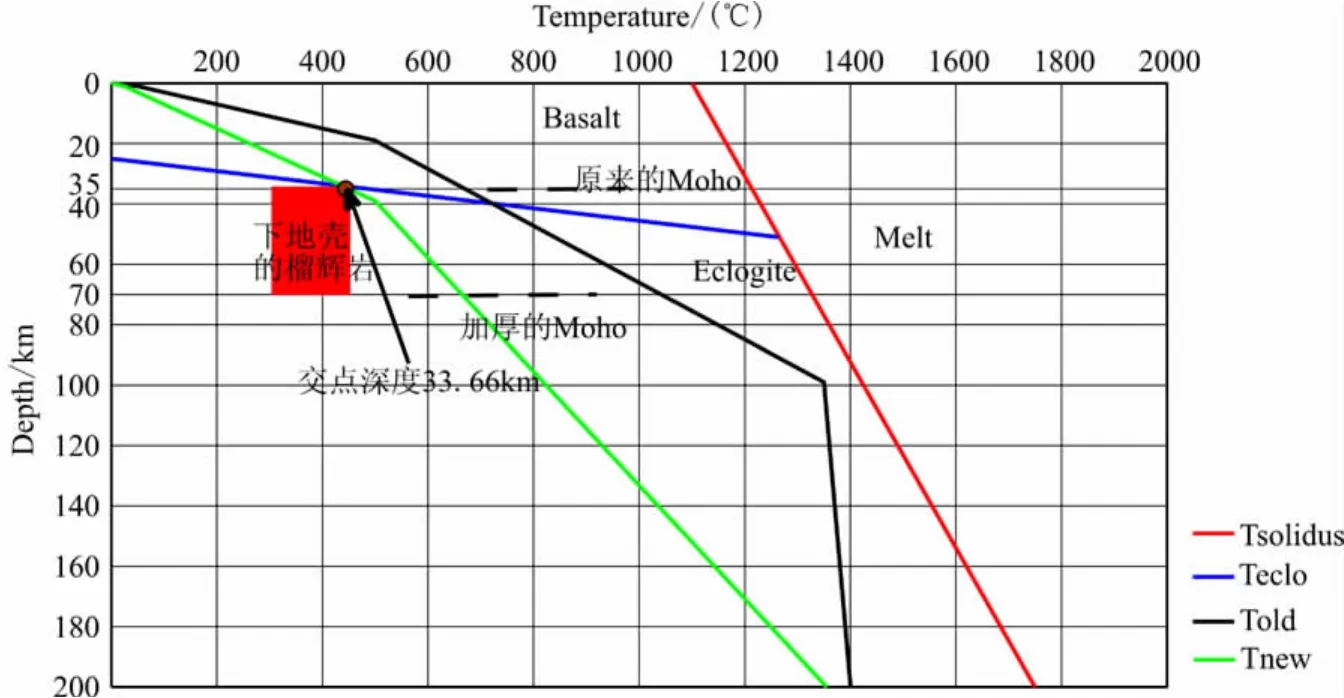
图1 岩石圈加厚玄武岩相变为榴辉岩相变图Fig.1 Phase transition of basalt to eclogite when lithospheres thicken

当温度达到固相线时岩石开始融化,计算温度,选择 McKenzie[45]公式(图1):

本文使用的是温度场定义的岩石圈厚度.岩石圈加厚前的地温曲线为图1中黑线,上地壳地温梯度为25℃/km,则20km处为500℃;岩石圈100km厚,温度为1350℃[46];最底边200km 处温度为1400℃,如图1中Told.地壳厚度为35km,即图中原来Moho的深度.假定岩石圈快速挤压增厚一倍到200km深,那么新的地温曲线为图1中绿色曲线,上地壳变为40km,温度为500℃;岩石圈变为200km,温度为1350℃,如图1中Tnew.Tnew与Telo的交点深度约为34km,加厚的Moho深度为70km,那么从34km到70km都为相变区域,我们首先考虑极端情形,假定这一区域都变为榴辉岩.
2.2 模型初始温度场和物质组成
我们计算区域为700km×700km,温度场主要参考Tnew的值,在底边界700km处温度为1500℃,如图2.关于物质组成,我们考虑极端的情形,数值模拟中我们往往对现实的模型或者资料进行很多简化或者合理的假设,从而专注于我们研究的问题,并且数值模拟的一大优势是,在保证正确的前提下,我们可以进行,不同参数,不同条件,不同模型的讨论.使我们得到研究问题的全面资料.本研究中我们假定初始地壳厚度为70km,榴辉岩厚度为34~70km,首先计算横向榴辉岩规模200~500km,如图3.我们将讨论横向榴辉岩不同规模,如300~400km,200~500km,100~600km,即水平尺度分别为100km,200km,300km时所造成不同的拆沉模式.
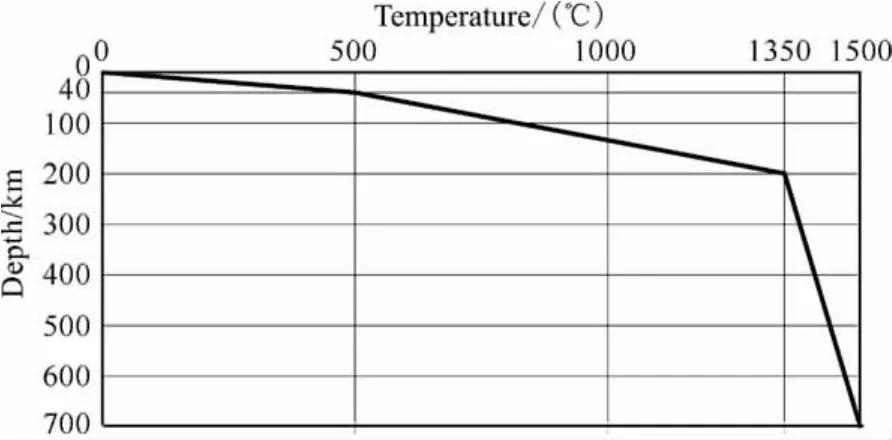
图2 计算的初始温度场Fig.2 Initial thermal state
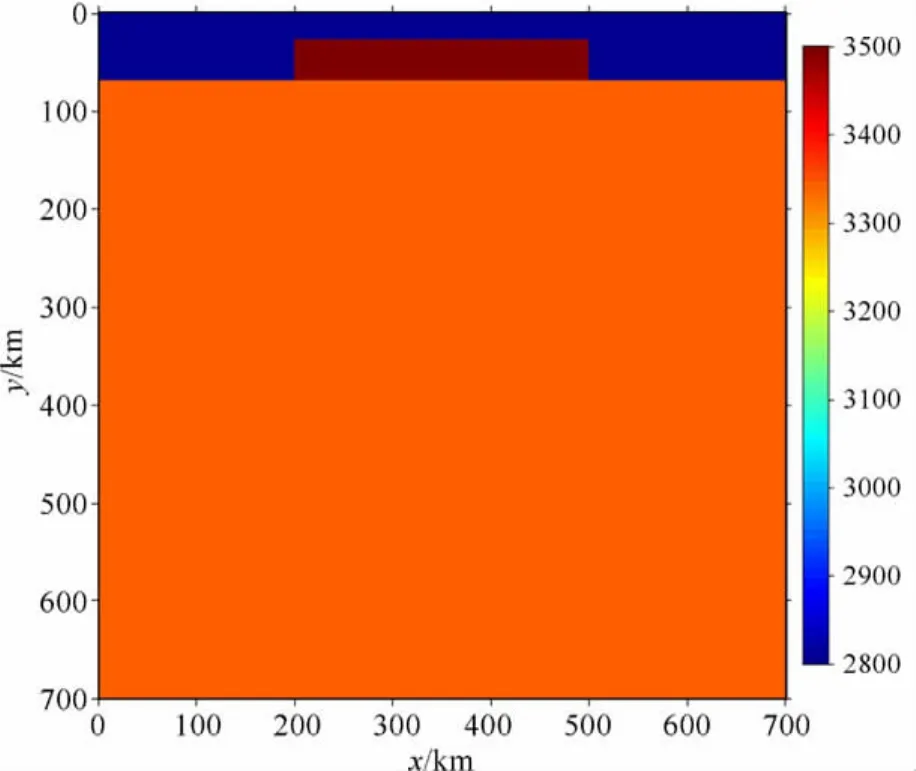
图3 初始物质组成Fig.3 Initial density
2.3 参数
计算中使用的参数如表1.计算中关键的参数是不同组分密度的选取,榴辉岩的密度取3500kg/m3[47],地壳的密度取2800kg/m3,地幔的密度取3340kg/m3[48].

表1 计算中用到的参数Table 1 Parameters used in computation
3 计算结果
榴辉岩的厚度为34~70km,我们横向上采用三种不同规模的榴辉岩分别为200~500km,300~400km,100~600km,讨论了不同规模的榴辉岩造成的不同拆沉结果.其温度场等值线不同时刻结果如图4.
图4中第一横排为中等规模榴辉岩(200~500km)情况下,不同时刻温度场拆沉的等温线结果,依次第二横排为较小规模榴辉岩(300~400km),第三横排为较大规模榴辉岩(100~600km).通过对比这三种情况,我们可以发现,榴辉岩的规模越大拆沉的越剧烈,最终能发生拆沉的区域也越大.为了更好的观察拆沉的过程,同时我们给出了不同模型密度的随时间的变化过程如图5.
图5的横排次序如图4.从图5中可见,当榴辉岩规模较大时,拆沉开始阶段的过程更倾向于双管道向下拆沉,模型较短时为单管道拆沉的模式.为了得到更精确的定量数据,我们给出了三种模型的榴辉岩最终时刻的温度彩图叠加速度矢量图.其结果如图6—8.
图6中三条黑色线从上到下分别为500,1000,1350℃时的温度等值线图,绿色线为拆沉前的岩石圈底边界,即200km处.因此从绿色线到最下面的黑线之间的区域为华北克拉通岩石圈能够发生拆沉的区域.通过计算我们能够知道减薄后的岩石圈最大厚度为64km,发生拆沉的最大厚度为136km.从流体场可以看出最终时刻发育两个比较完整的对流环.整个流体场比较稳定.
图7中的线代表的意义如图6.通过计算我们能够知道减薄后的岩石圈最大厚度为95km,发生拆沉的最大厚度为105km.可以看到最终时刻1350℃等温线以上两端局部有小的对流环,中心区域则是比较稳定,这样两端可能会热流更高,对应着比较强烈,时间比较长的岩浆活动.同华北克拉通岩浆分布地质资料[51]相比也比较符合.
图8中的线代表的意义如图6.通过计算我们能够知道减薄后的岩石圈最大厚度为108km,发生拆沉的最大厚度为92km.可以看到最终时刻流体场发育多管道向下拆沉.
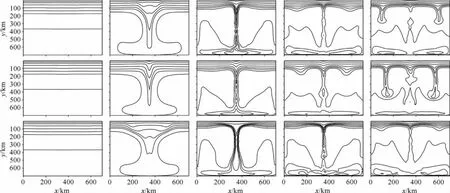
图4 三种模型不同时刻温度场等值线图Fig.4 Temperature contours of three models at different times
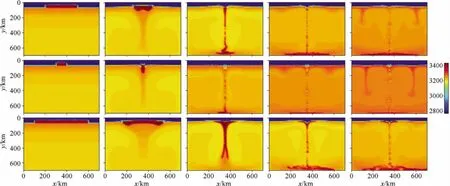
图5 三种模型不同时刻密度场变化图Fig.5 Density variations of three models at different times
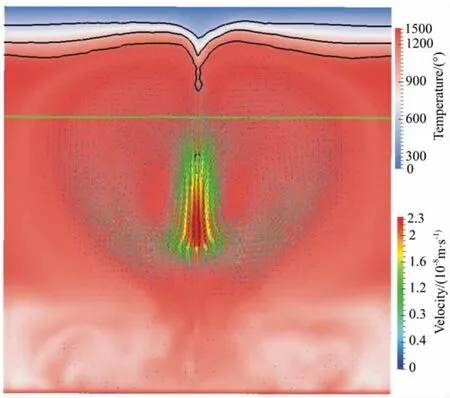
图6 较长模型时最终时刻拆沉的结果Fig.6 Delamination result of the big model at last
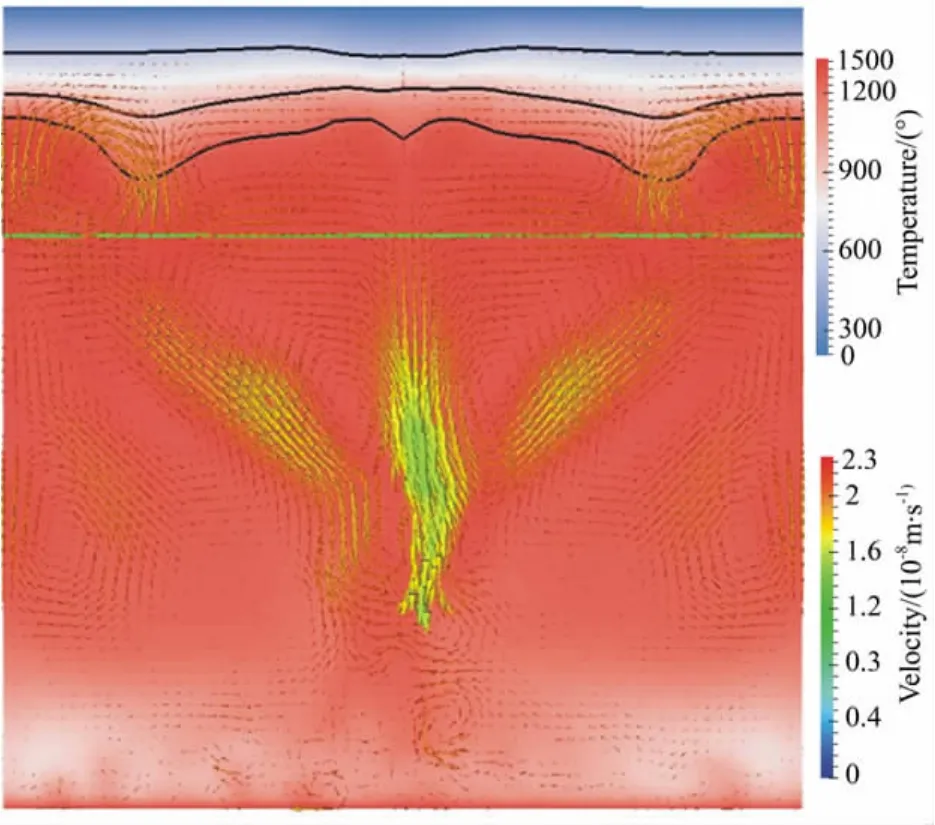
图7 模型为中等时最终时刻拆沉的结果Fig.7 Delamination result of the middle model at last
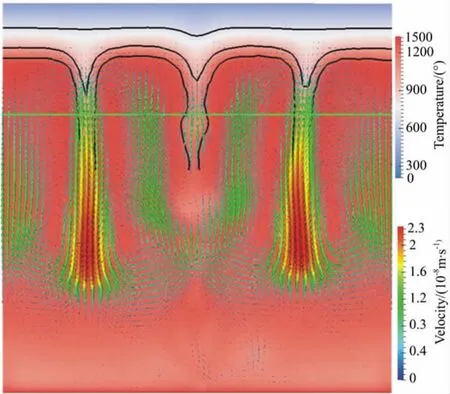
图8 模型为最小时最终时刻拆沉的结果Fig.8 Delamination result of the small model at last
4 拆沉减薄与热侵蚀减薄的对比讨论
通过对华北克拉通岩石圈热对流减薄机制的计算[32]及本文对华北克拉通岩石圈拆沉减薄机制的研究对比,我们可以知道在力学机制上这两种机制都是可能发生的,即华北克拉通岩石圈由于热扰动引起对流减薄和由于榴辉岩密度不稳定引起对流减薄都是可能发生的.但是通过细致的对比如图9,我们可以发现不同的减薄机制的结果是不一致的,对应的地表地质特征也完全不同.

图9 热对流减薄和拆沉减薄结果对比图Fig.9 Comparison of heat convection thinning and delamination
从图9中左图为热对流减薄的结果,右图是拆沉减薄的结果,从图中蓝色箭头标志我们可以发现,热对流减薄,中心区域变热变薄,中心区域是一个伸展区域,发展一个大的变质核杂岩区,岩浆的发展时序是从中心向两侧对称分布,并且向两侧减弱;热拆沉减薄结果中,中心区域受到挤压加厚,反而变冷,但是我们知道,对于地质历史上发生过的加热事件通过地质手段,如探针等方法是可以得到信息的,对于变冷的过程我们是没有办法得到信息的.在中心区域的两侧发生两个岩浆活动中心,岩浆的发展时序是从两侧向中心减弱发展.
通过上面讨论,何种减薄机制在这一过程中起主导作用,要更多的分析地表的地质资料,来找到足够的证据.
5 结 论
本文研究表明,中生代华北拉通岩石圈受挤压,玄武岩相变为密度较大的榴辉岩,榴辉岩重力失稳能够引起下地壳的拆沉,造成岩石圈的大规模减薄.对比不同规模的榴辉岩减薄方式发现,当榴辉岩较大规模时更可能发生双管道拆沉,而规模小时发生单管道拆沉.榴辉岩模型最大时候(100~600km)减薄后的岩石圈最大厚度为64km,发生拆沉的最大厚度为136km;规模中等时候(200~500km)岩石圈最大厚度为95km,发生拆沉的最大厚度为105km;规模比较小时候(300~400km)岩石圈最大厚度为108km,发生拆沉的最大厚度为92km.
通过对比中生代华北克拉通岩石圈热减薄和拆沉减薄机制可知,从力学机制上都能造成岩石圈减薄,但他们的结果对应着不同的地质特征.对比我们的计算,热侵蚀最多能减薄100km[32],拆沉最多能够减薄136km,但是很多资料都表明华北东部最多减薄了120km以上,所以单从减薄量上来看拆沉减薄机制更符合实际地质资料.根据华北克拉通岩浆分布规律[7,49-50]我们可以发现有东北部和南部两个比较大的中心,这与我们文中讨论的中等规模的榴辉岩拆沉减薄机制能够在中心两侧发展两个岩浆活动中心比较一致.同时如果我们单纯考虑热侵蚀减薄机制,它所对应的底部热扰动太过于偶然性,为什么不在其他地方,而只在华北克拉通,相比较于热侵蚀,由于拆沉理论得到了很多地质学的证据,如高山等的地球化学证据证明华北发生拆沉进入地幔的榴辉岩存在,所以我们更倾向于榴辉岩重力失稳引发拆沉是主导华北克拉通岩石圈减薄的机制.
(References)
[1]Sleep N H.Evolution of the continental lithosphere.Annual Review of Earth and Planetary Sciences,2005,33:369-393.
[2]Carlson R W,Pearson D G,Physical,chemical and chronological characteristics of continental mantle.Reviews of Geophysics,2005,43:RG1001,doi:10.1029/2004RG000156.
[3]Moser D E,Flowers R M,Hart R J.2001.Birth of the Kaapvaal tectosphere 3.08billion years ago.Science,291:465-468.
[4]Seber D,Barazangi M,lbebrahim A.Geophysical evidence for lithospheric delamination beneath the Alboran Sea and Rif-Betic mountains.Nature,1996,379:785-790.
[5]Chen L,Zheng T,Xu W.A thinned lithospheric image of the Tanlu Fault Zone,eastern China:Constructed from wave equation based receiver function migration.Journal of Geophysical Research,2006,111:B09312.
[6]高山,章军锋,许文良,等.拆沉作用与华北克拉通破坏.科学通报,2009,54:1962-1973.Gao S,Zhang J F,Xu W L,et al.Delamination and destruction of the North China Craton.Chinese Sci Bull,2009,54,doi:10.1007/s11434-009-0395-9.
[7]吴福元,徐义刚,高山,等.华北岩石圈减薄与克拉通破坏研究的主要学术争论.岩石学报,2008,24:1145-1174.Wu F Y,Xu,Y G,Gao S,et al.Controversy over studies of the lithospheric thinning and craton destruction of North China.Acta Petrol Sin (in Chinese),2008,24:1145-1174.
[8]郝晓光,方剑,刘根友等.岩石圈拆沉还是软流圈上涌?——正常密度理论与华北克拉通破坏重力学机制研究.地球物理学进展,2011,26(4):1137-1140,doi:10.3969/j.issn.1004-2903.2011.04.001.Hao X G ,Fang J,Liu G Y ,et al.North China craton destruction,delamination or thermal erosion?Chinese J.Geophys.(in Chinese),2011,26(4):1137-1140,doi:10.3969/j.issn.1004-2903.2011.04.001 .
[9]许卫卫,郑天愉,赵亮.华北地区410km间断面和660km间断面结构—克拉通活化的地幔动力学状态探测.2011,中国科学:地球科学,41:678–685.Xu W W,Zheng T Y,Zhao L.Mantle dynamics of the reactivating North China Craton:Constraints from the topographies of the 410km and 660km discontinuities.Sci China Earth Sci,2011,54:881-887,doi:10.1007/s11430-010-4163-0.
[10]张旗.从"岩石圈减薄"到"克拉通破坏".地球物理学进展,2011,26(6):2262-2269,doi:10.3969/j.issn.1004-2903.2011.06.047.Zhang Q.The evolution from"lithospheric thinning"to"cratonic destruction" .Chinese J.Geophys.(in Chinese),2011,26(6):2262-2269,doi:10.3969/j.issn.1004-2903.2011.06.047.
[11]Fan W M,Zhang H F,Baker J.On and off the north China craton:Where is the Archaean keel?Journal of Petrology,2000,41:933-950.
[12]Xu Y G. Thermo-tectonic destruction of the Archean lithospheric keel beneath the Sino-Korean Craton in China:Evidence,timing and mechanism.Physics and Chemisty of the Earth,2001,26:747-757.
[13]Liu Y S,Gao S.Melt-peridotite interactions:Links between garnet pyroxenite and high-Mg signature of continental crust.Earth and Planetary Science Letters,2005,234:39-57.
[14]Zheng J P,Griffin W L,O′Reilly S Y.Late Mesozoic-Eocene mantle replacement beneath the eastern North China Craton:Evidence from the Paleozoic and Cenozoic peridotite xenoliths.International Geology Review,2005,47:457-472.
[15]Zheng J P,Sun M,Zhou M F.Trace elemental and PGE geochemical constraints of Mesozoic and Cenozoic peridotitic xenoliths on lithospheric evolution of the North China Craton.Geochimica et Cosmochimica Acta,2005,69:3401-3418.
[16]Zheng J P,Griffin W L,O′Reilly S Y.Mineral chemistry of garnet peridotites from Paleozoic,Mesozoic and Cenozoic lithosphere:Constraints on mantle evolution beneath eastern China.Journal of Petrology,2006,47:2233-2256.
[17]Gao S,Rudnick R L,Carlson R W.Re-Os evidence for replacement of ancient mantle lithosphere beneath the North China craton.Earth and Planetary Science Letters,2002,198:307-322.
[18]Gao S,Rudnick R L,Yuan H L.Recycling lower continental crust in the North China craton.Nature,2004,432:892-897.
[19]Zhang H F,Sun M,Zhou X H.Mesozoic lithosphere destruction beneath the North China Craton:Evidence from major,trace element,and Sr-Nd-Pb isotope studies of Fangcheng basalts.Contributions to Mineralogy and Petrology,2002,144:241-253.
[20]Zhang H F,Sun M,Zhou X H.Secular evolution of the lithosphere beneath the eastern North China Craton:Evidence from Mesozoic basalts and high-Mg andesites.Geochimica et Cosmochimica Acta,2003,67:4373-4387.
[21]Sobolev A V,Hofmann A W,Sobolev S V,et al.An olivine-free mantle source of Hawaiian shield basalts.Nature,2005,434:590-597.
[22]Sobolev A V,Hofmann A W,Kuzmin D V,et al.The amount of recycled crust in sources of mantle-derived melts.Science,2007,316:412-417.
[23]郭慧丽,徐佩芬.地震层析成像在华北克拉通地区的研究进展.地球物理学进展,2011,26(5):1557-1565,doi:10.3969/j.issn.1004-2903.2011.05.007.Guo H L,Xu P F.Progress of Seismic tomography applied in the North China Craton.Chinese J.Geophys.(in Chinese),2011,26(5):1557-1565,doi:10.3969/j.issn.1004-2903.2011.05.007.
[24]Jull M,Kelemen.On the conditions for lower crustal convective instability.Journal of Geophysical Research,2001,106,6423-6446.
[25]Anderson D A.Large igneous provinces,delamination,and fertile mantle.Elements,2006,1:271-275.
[26]Anderson D A.Speculations on the nature and cause of mantle heterogeneity.Tectonophysics,2006,146:7-22.
[27]Lustrino M.How the delamination and detachment of lower crust can influence basaltic magmatism. Earth-Science Review,2005,72:21-38.
[28]Bédard J H. A catalytic delamination-driven model for coupled genesis of Archaean crust and sub-continental lithospheric mantle.Geochimica et Cosmochimica Acta,2006,70:1188-1214.
[29]Arndt N T,Goldstein S L.An open boundary between lower continental crust and mantle:Its role in crust formation and crustal recycling.Tectonophysics,1989,161:201-212.
[30]Kay R W,Kay S M.Creation and destruction of lower continental crust.Geologische Rundschau,1991,80:259-278.
[31]Rudnick R L.Making continental crust.Nature,1995.378:571-577.
[32]乔彦超,郭子祺,石耀霖.数值模拟华北克拉通岩石圈热对流侵蚀减薄机制.中国科学:地球科学,2012,(待发表).Qiao Y C,Guo Z Q,Shi Y L.Thermal Convection Thinning of the North China Craton:Numerical Simulation.Sci China Earth Sci.(in press).
[33]Huang J S,Zhong S,van Hunen J.Controls on sublithospheric small-scale convection.Journal of Geophysical Research,2003,108(B8),2405.Doi:10.1029/2003JB002456.
[34]Gerya T V,Yuen D A.Characteristics-based marker-in-cell method with conservative finite-differences schemes for modeling geological flows with strongly variable transport properties.Physics of the Earth and Planetary Interiors,2003,140:295-320.
[35]Gerya T V, Maresch W V, Willner A P.Inherent gravitational instability of thickened continental crust with regionally developed low-timedium-pressure granulite facies metamorphism.Earth and Planetary Science Letters,2001,190:221-235.
[36]Gerya T V,Perchuk L L,Maresch W V.Thermal regime and gravitational instability of multi-layered continental crust:implications for the buoyant exhumation of high-grade metamorphic rocks.European Journal of Mineralogy,2002,14:687-699.
[37]叶正仁,王建.上地幔变黏度小尺度对流的数值研究.地球物理学报,2003,46(3):335-339.Ye Z R,Wang J.A numerical research on the small scale convection with variable viscosity in the upper mantle.Chinese J.Geophys.(in Chinese),2003,46(3):335-339.
[38]傅容珊,常筱华,黄建华,刘文忠.区域重力均衡异常和上地幔小尺度对流模型.地球物理学报,1994,37(S2):249-258.Fu R S,Chang X H,Huang J H,et al.Regional gravity isostatic anomaly and small scale convection model in upper mantle.Chinese J.Geophys.(in Chinese),1994,37(S2):249-258.
[39]熊熊,傅容珊,许厚泽等.增厚大陆岩石层热边界层对流剥离的数值模拟.地球物理学报,1998,41(S1):33-40.Xiong X,Fu R S,Xu H Z,et al.Numerical Simulation of the convective removal of the thickened thermal boundary layer of continental lothosphere.Chinese J.Geophys.(in Chinese),1998,41(S1):33-40.
[40]傅容珊,黄建华,董树谦.利用地震层析成象数据计算地幔对流新模型的探讨.地球物理学报,2003,46(6):772-778.Fu R S.A new mantle convection model constrained by seismic tomography data.Chinese J.Geophys.(in Chinese),2003,46(6):772-778.
[41]Boussinesq J.Theorie analytique de la chaleur mise en harmonie avec la thermodynamique et avec la theorie mecanique de la lumiere.Gauthier-Villars Paris,1903,2:157-176.
[42]Tackley P. Effect of strongly temperature-dependant viscosity on time-dependent 3-dimensional model of mantle convection.Journal of Geophysical Research,1993,20(20):2187-2190.
[43]Wyllie P.The Dynamic Earth.New York:Wiley,1971:416.
[44]Anderson D L. Tectonics and composition of Venus.Geophys.Res.Lett.,1980,1:101-102.
[45]McKenzie D.The generation and compaction of partially molten rock.Journal of Petrology,1984,25(3):713-765.
[46]McKenzie D,Roberts J M,Weiss N O.Convection in the earth's mantle:Towards a numerical simulation.Journal of Fluid Mechanics,1974,6:465-538.
[47]Anderson D L.The upper mantle transition region:eclogite?Geophys.Res.Lett.,1979,6:433-435.
[48]Dupeyrat L.Thermal and chemical convection in planetary mantles.Journal of Geophysical Research,1995,100:497-520.
[49]吴福元,李献华,杨进辉等.花岗岩成因研究的若干问题.岩石学报,2007,23(4):1217-1238.Wu F Y,Li X H,Yang J H,et al.Discussions on the petrogenesis ofgranites.Acta Petrol.Sin.(in Chinese),2007,23(4):1217-1238.
[50]嵇少丞,王茜,许志琴.华北克拉通破坏与岩石圈减薄.地质学报,2008,82(2):174-193.Ji S C,Wang Q,Xu Z Q.Break-up of the North China Craton through lithospheric thinning.Acta Geologica Sinica(in Chinese),2008,82(2):174-193.致 谢 感谢郑亮先生提供并维护并行机器.

